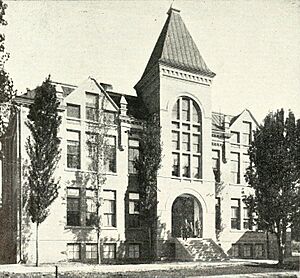Deseret Museum facts for kids
The Deseret Museum was an important museum located in Salt Lake City, Utah. It was a place where people could learn about history, science, and nature. The museum existed for many years, showing interesting collections to visitors.
Contents
What Was the Deseret Museum?
The Deseret Museum was a special place in Utah. It displayed many different items. These included historical artifacts, scientific exhibits, and natural history specimens. It helped people learn about the world around them.
How It Started
The museum first opened in 1869. It was called the "Salt Lake City Museum and Menagerie." A "menagerie" is like a small zoo with live animals. John Willard Young started this museum. Guglielmo Giosue Rosetti Sangiovanni was the first curator. A curator is like a manager who takes care of the museum's collections.
New Owners and New Names
In 1878, the Church of Jesus Christ of Latter-day Saints took over the museum. Joseph L. Barfoot became the new curator. He worked there until he passed away in 1882.
Later, in 1885, a group called the Salt Lake Literary and Scientific Association bought the museum. They gave it a new name: the "Deseret Museum." In 1891, James E. Talmage became the curator. He had help from J. Reuben Clark Jr. for many years. When Talmage took on an important new role in 1911, his son, Sterling B. Talmage, became the curator.
The Museum's Final Years
The Deseret Museum continued to operate for several more years. However, in 1919, it became part of the Temple Square Bureau of Information. This meant it was no longer a separate museum.
The many collections from the Deseret Museum found new homes. Some items were displayed at Temple Square. Other parts of the collection were sent to different institutions. These included the LDS University museum and the Daughters of Utah Pioneers museum. This way, the museum's treasures could still be seen and studied by many people.


